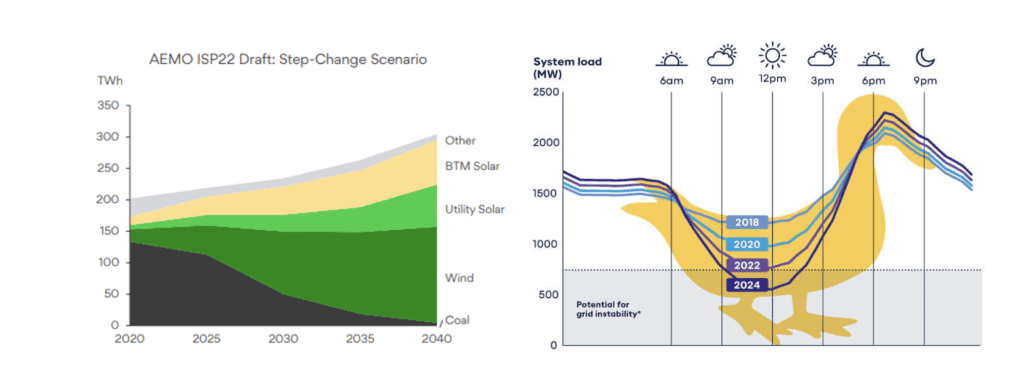What Texas Can Learn from Australia—How VPPs Are Saving Renewable Energy
In the face of unprecedented weather events driven by climate change, the global electrical utilities sector is grappling with disruptions, and the state of Texas in particular has been significantly impacted in recent years.
From the winter storms of February 2021 to challenges posed by heat events in the summer of 2023, Texas has faced multiple blackouts, and has had difficulty managing energy conservation reliably to prevent them. Looking ahead, the North American Electric Reliability Corp. (NERC) warns of potential emergencies during extreme cold snaps in the current winter season. Australia faces similar challenges in a decentralized energy market and its experience shows a path to help Texas avoid disruptions due to global warming.
Challenges in the Texas Energy Ecosystem
The Texas energy ecosystem has several challenges in ensuring a reliable energy supply. Operating within the Electric Reliability Council of Texas (ERCOT) territory, the grid is relatively isolated, and the deregulated market further separates generation, transmission, distribution, and retail operations. Alongside the climate emergencies, the U.S. Energy Information Administration reported a 25% increase in electricity sales from 2013 to 2023, a trend expected to continue with rising demand from electric vehicles and new factories.
COMMENTARY
As with other regions, Texas sees a growing presence of distributed energy resources (DERs) and renewable energy on its grid. With nearly 3 GW of DERs in ERCOT, as reported by the Public Utility Commission of Texas in March 2022, the state faces what experts call a “super duck” curve on days of peak wind and solar energy production in the evening.

Texas has started implementing virtual power plants (VPPs) to help manage critical energy distribution. VPPs operate as a unified and flexible power plant. They aggregate electrical energy from various sources, including renewables such as wind turbines, and energy consumers, who give energy back to the grid via home EV systems or solar roof panels. Since VPPs can be managed via software platforms, they can take advantage of artificial intelligence (AI) to manage energy distribution in real time across regions and time based on demand. VPPs can enhance grid reliability and efficiency, and greatly reduce blackouts.
Learning from Experience: An Australian Success with VPPs
Australia has shown significant interest and growth in the deployment of VPPs, driven by factors such as the increasing share of renewable energy, a need for grid stability, and the adoption of distributed energy resources. Australia’s deployment and more sophisticated use of virtual power plants can serve as a model for the Lone Star State’s future with renewable energy and developing a more resilient grid.
Australian energy grids, much like the Texas grid, are long and “stringy” with clusters of connected urban areas and long transmission lines over rural areas. It is also deregulated with several companies providing generation, transmission, distribution or retail services. Operators on Australian grids also face their own super duck curve (Figure 1) with a high penetration of solar.

This is likely to only increase in the future as the Australian Energy Market Operator (AEMO) looks to largely phase out coal generation in favor of renewables by 2040. And while Australia may not face the same extreme cold challenges during the winter, it has faced massive wildfires and flooding in recent years.
Australia is discovering that VPPs can do much more to improve fundamental energy infrastructure challenges. Virtual power plants can facilitate secure, interoperable energy data flows between edge devices, core generation, and other grid assets because they can form a hyperconnected digital overlay across the entire value chain including generation, transmission, distribution, and customer assets. This digital overlay can be instrumental in orchestrating all IoT and data assets to deliver a constant efficient flow of electricity for homes, businesses and state or national critical infrastructures.

In Australia, there are several players in the VPP market that are making steady incremental advances in decentralized energy distribution with the support of private investment and under the auspices of government policies and initiatives, at both federal and state levels. Origin Energy, an Australian energy generator and retailer is playing a crucial role in shaping the VPP landscape in Australia, and the integration of VPPs into the energy mix worldwide.

Origin’s implementation of a VPP, known as Origin Loop (Figure 2) , offers valuable insights. Operating in a deregulated market similar to Texas, Origin Loop orchestrates over 1 GW of assets held by more than 300,000 customers as of October 2023. Origin Loop’s success lies in its design that benefits various stakeholders, including wholesale energy markets, the grid, and customers. Origin Loop connects small assets to energy markets through energy trading, creating value for grid stakeholders through daily grid optimization and responsiveness to critical events like floods, fires, or outages.
The Need for Securing VPPs
Consider that software is now a fundamental component of any electrical grid infrastructure, and that VPPs depend entirely on software and AI to operate. VPPs are vulnerable to cyber attacks, but not the kind that most companies are accustomed to, such as ransomware attacks. The sophistication of cyber intrusions is increasing rapidly and attacks that could falsify data that can disrupt AI systems are possible and quantum attacks are just around the corner. Globally, most energy grids are poorly equipped to handle cyberattacks. A critical aspect of VPP implementation is ensuring security, data privacy and scalability while accommodating a diverse ecosystem of disparate IoT devices, data formats, and software platforms.
Furthermore, we are in the midst of a larger trend: IT/OT integration where the functions of IT and OT environments are progressively blending, making IoT devices perform more IT tasks to be more efficient and self-reliant.
For these reasons it is a necessity to fortify critical grid fabrics and new digital energy applications that mitigate any resilience, reliability, or sustainability breakdown of our energy infrastructure with universal data privacy and security technologies. Here is where California enters the picture in supporting VPP initiatives—not only in the Lone Star state, but in Australia and beyond.
An International Standard for Global Energy
Energy leader Origin recognized the need for strong data protection and interoperability standards and partnered with Intertrust to found the Trusted Energy Interoperability Alliance (TEIA), a global standard (Figure 3) to standardize data privacy, device security, and data interoperability across the energy sector. Along with the energy companies E.ON, JERA, and GS Energy, the Alliance aims to provide the entire energy ecosystem a security and trust model for building a new, interoperable energy system. Intertrust is a trusted distributed computing company located in the San Francisco Bay Area. With over 30 years of experience in distributed device and data security.

Toward a Resilient Energy Future
Origin’s path in the Australian energy market in an example that Texas could follow. One of the successful design principles of Origin Loop was to reach a broad range of customer assets and grid information and it shows that VPPs with a broad ability to quickly scale an asset base, and integrate with other grid assets, can be the ideal digital transformation for the Texas energy industry. VPPs that are able to communicate securely with a broad base of both edge and grid assets and communicate availability reliably in real-time will contribute to the reliability and resilience of the grid, especially in the face of disruptions.
Texas, along with similar geographies, now has an opportunity to adopt strengthened VPP solutions. Building on past experiences, these solutions can pave the way for a future where customized energy solutions meet individual customer needs while delivering the reliable energy essential for their lives and businesses.
—Florian Kolb is chief commercial officer and general manager of Energy for Intertrust Technologies, a California-based energy data security group in Silicon Valley co-owned by a consortium of major energy companies. Brendan Manzie is general manager of Future Energy at Australia-based Origin Energy. He leads business development and product management for Origin’s Loop virtual power plant products.